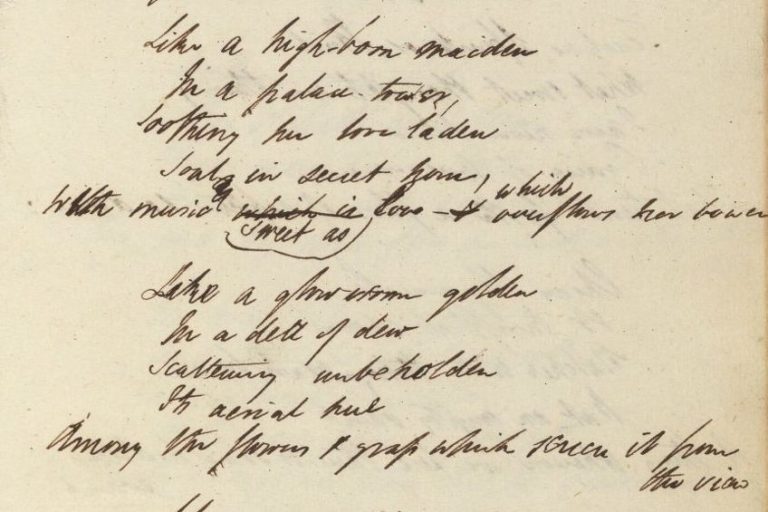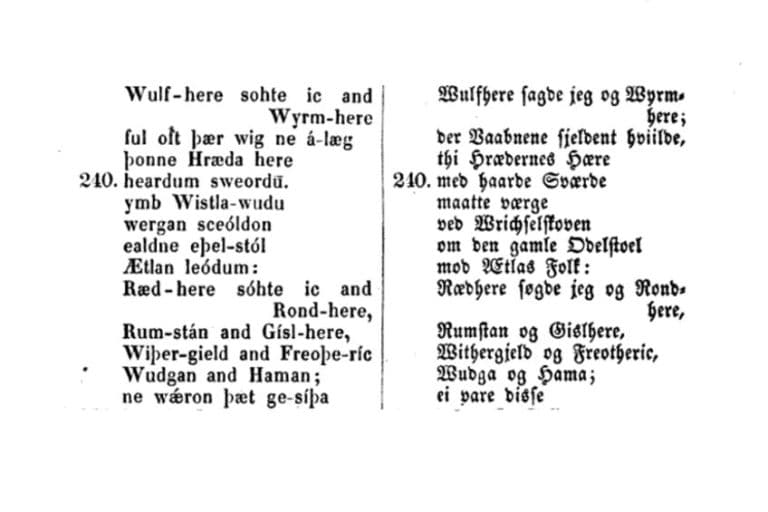Mood in Poetry – How to Craft Atmosphere With Words
What is mood in poetry? Are there a number of different poem moods? Is there a good example of mood in poetry? Each of these questions will be explored in some level of depth in the various sections of this article. We will discuss the various uses of mood in poetry, the types of poem moods, how one could use mood, and a few examples of poetry that make use of mood in a specific way to provide the reader with a specific perspective. If this is an area that is of interest to you, let’s get started and have a look at mood in poetry!
A Look at Mood in Poetry
So, let’s start with the most obvious thing here. What is mood in poetry? This term is somewhat vague in a sense, but it describes the way in which the various aspects of a poem, such as the way in which the words are chosen, used, and arranged, the way in which a particular topic is adopted, the tone of the writer’s conveying, and so on, are used to establish a certain feeling within a poem.
There are many different possible types of mood in a poem, and they will be adopted for a variety of different reasons and purposes. It depends on what an author is trying to convey through a particular poem. For instance, the exact same events or topic can be discussed by two entirely different types of writers and the result will be two separate moods. For a non-poetic example, imagine a post-apocalyptic story. You could have one that is incredibly dark and unhappy that focuses on a desperate struggle for survival, or you can have one that focuses on the wackiness of being in the apocalypse. They are both about the same thing, yet the mood of each is significantly different.

The emotional undertone of the poem is what we are examining in this particular case. So, why does mood in poetry exist in the first place? Well, it functions as a means of allowing a writer to provide a certain mentality, a certain perspective on a particular topic. The way in which a poet chooses to express a certain kind of topic could even have consequences for others who may not have thought about it in a certain way.
So, the mood in a poem can affect the way in which the reader engages with the work, it can help to convey certain themes and ideas that the poem may wish to exhibit, and it can aid us in better associating or connecting with certain ideas and characters, and the use of human emotion is also a powerful way to force a reader to pay attention. The mood of a poem is a powerful thing, but we are going to examine that in far more depth in the next few sections.
Types of Mood in Poetry
There are many different types of mood in poetry and attempting to distill the vastness of human emotionality and experience down into a comprehensive list would be an impossibility. Instead, we are only going to look at five of the different kinds of poem moods that one might come across if one were to pick up a few poems and start to peruse them.
So, let’s have a look at some of the different kinds of moods that can be found in poetry.
The Use of a Dark Mood in Poetry
The use of the term “dark” is something of a catchall expression as it does not necessarily entail the use of a particular emotion. However, there are many ways in which a darker mood can be attained in a poem. In this sense, when referring to something as “dark’, we mean that it encompasses ideas surrounding despair, fear, gloom, and other similar feelings. The reason that a poet may wish to exhibit ideas such as that would be if they wished to express the way in which these kinds of thoughts and feelings can become immensely powerful within our minds. We all have to deal with despair and sadness in different parts of our lives, and that can be conveyed through poetry in a variety of ways.
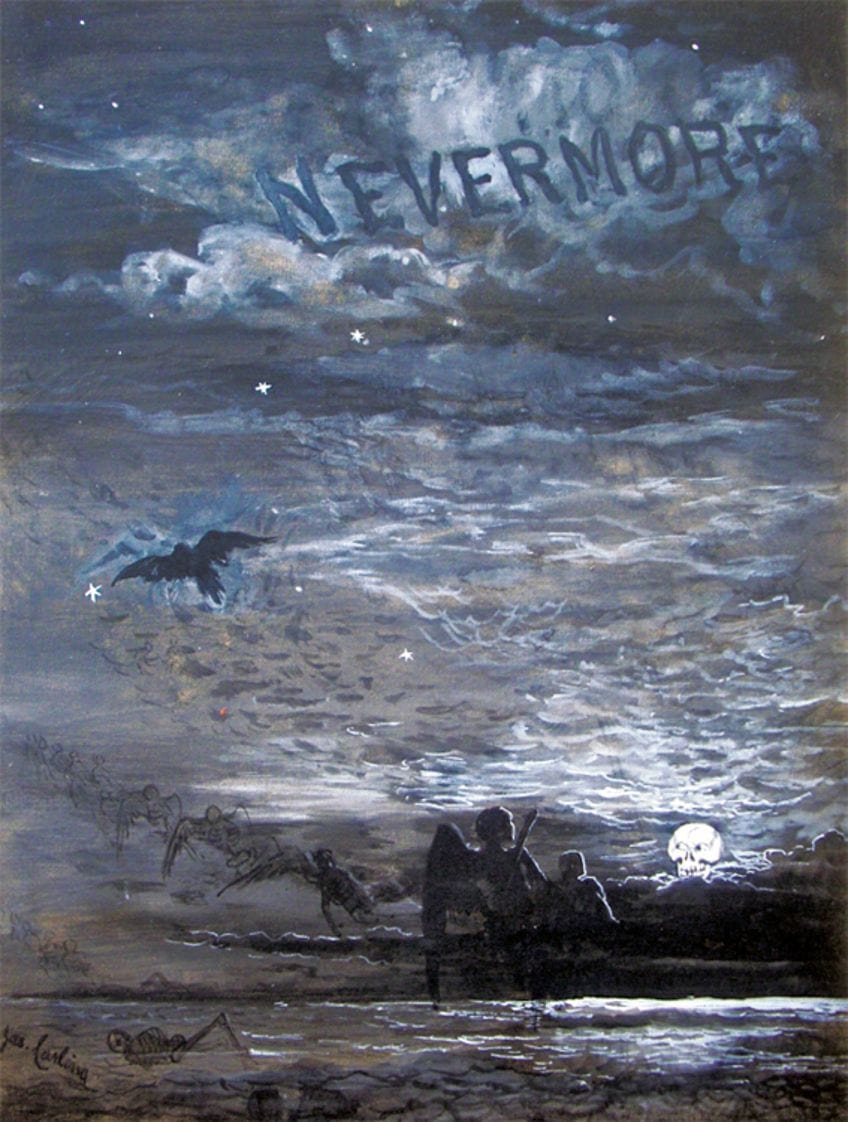
An example of a darker mood in poetry can be found in texts such as The Raven by Edgar Allen Poe. This famous narrative poem depicts a speaker who has a fearful experience with a raven who appears at his window in the night. The use of repetitious structures with a songlike flow in which rhyme and rhythm are heightened, allows the melancholic and haunting mood of the piece to provide the reader with a feeling of unease. The imagery of the bird and the night contribute to this feeling as we all know that the night-time air can hide all sorts of dark creatures such as this, and they too could arrive at our window and tap for us. However, we may not experience a bird who also speaks and reminds us of the one we loved, but the feeling that it evokes is one that tends to be understandable regardless of those more supernatural elements of the poem.
The Use of a Romantic Mood in Poetry
Romance and love are often some of the most common aspects of poetry that we tend to see, and there is a very good reason why poems about love have become so pop culturally well-known. These kinds of poems can be found throughout films and other pieces of media, and there is the taken-for-granted assumption that a poem about love is something of a default. However, how might a poet make use of this kind of mood in a poem? By discussing ideas such as passion, longing, and beauty a poet may be able to instill the kind of feeling that we associate with romantic feelings, and through the use of flowery language and description, we may be able to see the kinds of things that the poet wishes us to see.
Imagery is often integral to the development of a romantic mood in poetry, and this can mean showing the reader what the object of love looks like or how they act.
A famous example of this would be something like William Shakespeare’s Shall I compare thee to a summer’s day. This poem makes extensive use of highly hyperbolic language, such as by comparing the beauty of this person to something natural like the very concept of a fine summer’s day. The use of hyperbolic language, in which an unrealistic portrayal of a character is emphasized, is a very common way of arranging a romantic mood in poetry as it allows one to elevate the object of one’s love as something angelic and otherworldly. This serves to reflect the way that we may feel inside for the outside world to see. Everyone in our world is simply a regular person, but when you are loved by someone or experience love for another, you may see that person in very different ways that are not rational or logical. That lack of rationality is exactly the kind of thing that allows the romantic mood of a poem to thrive.
The Use of a Cheerful Mood in Poetry
Who doesn’t want to be cheerful? We would all probably prefer if it was possible to be cheerful as often as possible, but this is, sadly, not always possible. However, a poem that decides to make use of a cheerful mood is one that can achieve this through a number of different methods, such as through the extolling of optimistic sentiments, general joy, celebratory happiness, humor, and so on. There are many different ways in which this could be expressed, and it is often expressed through the exclusion or purposeful refutation of pessimistic thoughts and beliefs. One can either create a poem in which there is no sadness, in which there is only joy, or that joy can come as an affirmation of something darker and more unhappy, such as the joy that can arise when one survives a trauma.
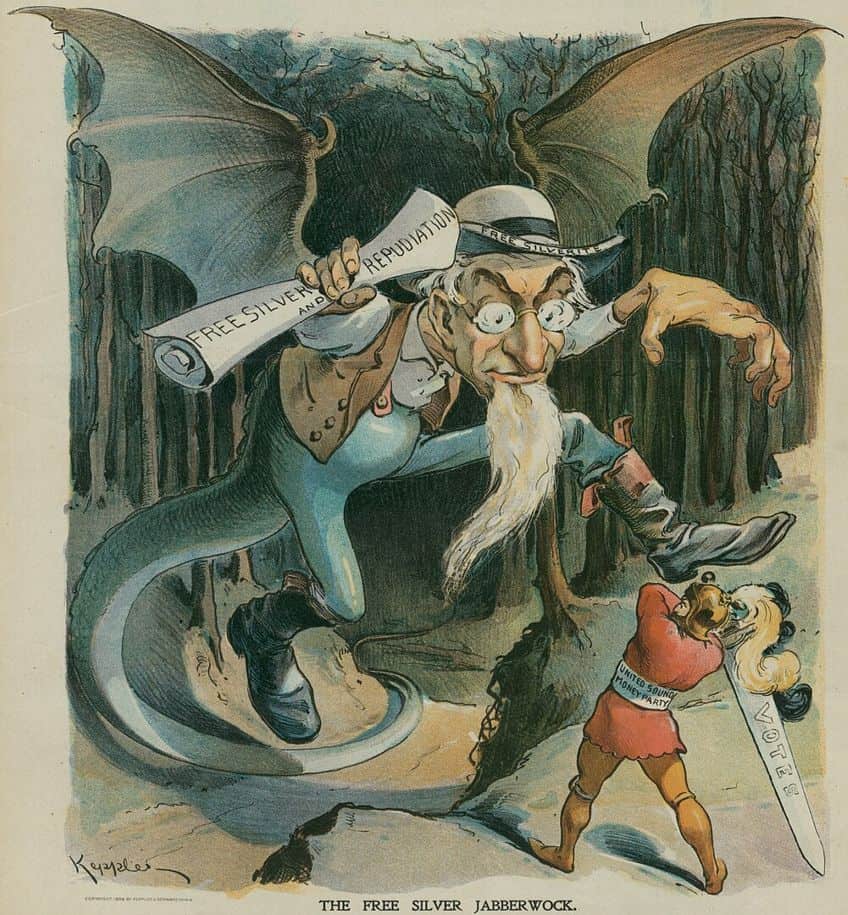
A more cheerful mood can be found in texts such as Jabberwocky by Lewis Carroll. This particular text, even though it presents the reader with a text that is actually about the slaying of a monster of some kind, it is presented in such a way that it is absolute nonsense. The use of humorous nonsense is something that can create a cheerful and funny mood for the reader to experience, and so even though the subject being tackled is a rather dark one, the use of a variety of invented words that create a certain flowing feeling guides the reader towards an interpretation of the poem that is more likely to feel pleasant and fun. In addition, the invented words have since become actual words that are sometimes used, such as “chortled”, and the celebratory nature of the victory of the subject over the creature is also exemplified in some of the words that are shouted, such as “O frabjous day!”
The Use of a Mysterious Mood in Poetry
A poet may wish to project a more mysterious tone with what they wish to present in their poetry, and this can mean that a poem may incorporate aspects of suspense, intrigue, and curiosity within a poem. A slower and more drawn-out style is often favored for this kind of mood in poetry, as mystery is not created through a quick and easy text but rather through one that paces itself in such a way that it gives the reader time to think about what has happened within the poem and, more importantly in terms of mystery, what might still happen in the poem.
Mystery is always about trying to see what comes next, and what comes next often needs to match the tone set by what had come before.
An example of this particular tone within a poem can be found in something like The Highwayman by Alfred Noyes. This lengthy narrative poem tells the tale of a highwayman who has fallen in love with a woman. However, he is soon betrayed by those he knows and later learns that the woman he loved died in an attempt to protect him, and then, by the end, he dies in a pointless attempt at revenge. The lengthier nature of the poem itself and the way in which it incorporates a narrative with characters add to the more mysterious mood of the poem. It allows itself to wind through a lengthy discussion and exploration of these ideas before finally coming to an end.
The Use of an Angry Mood in Poetry
Anger is something that we all feel at different points in our lives. We feel anger in a variety of different ways, and many poems have made use of techniques to ensure that this mood in poetry is exhibited in such a way that it aids us in feeling that anger. To use anger, it can often mean the use of shorter and snappier phrases and ideas as anger itself is usually fast and potent. However, anger also builds and swells over a lengthier period, and it finally explodes in a fast and deadly manner. This kind of feeling can be captured by a poet who may wish to indicate their rage, resentment, or protest at something that has happened in the world or to them.
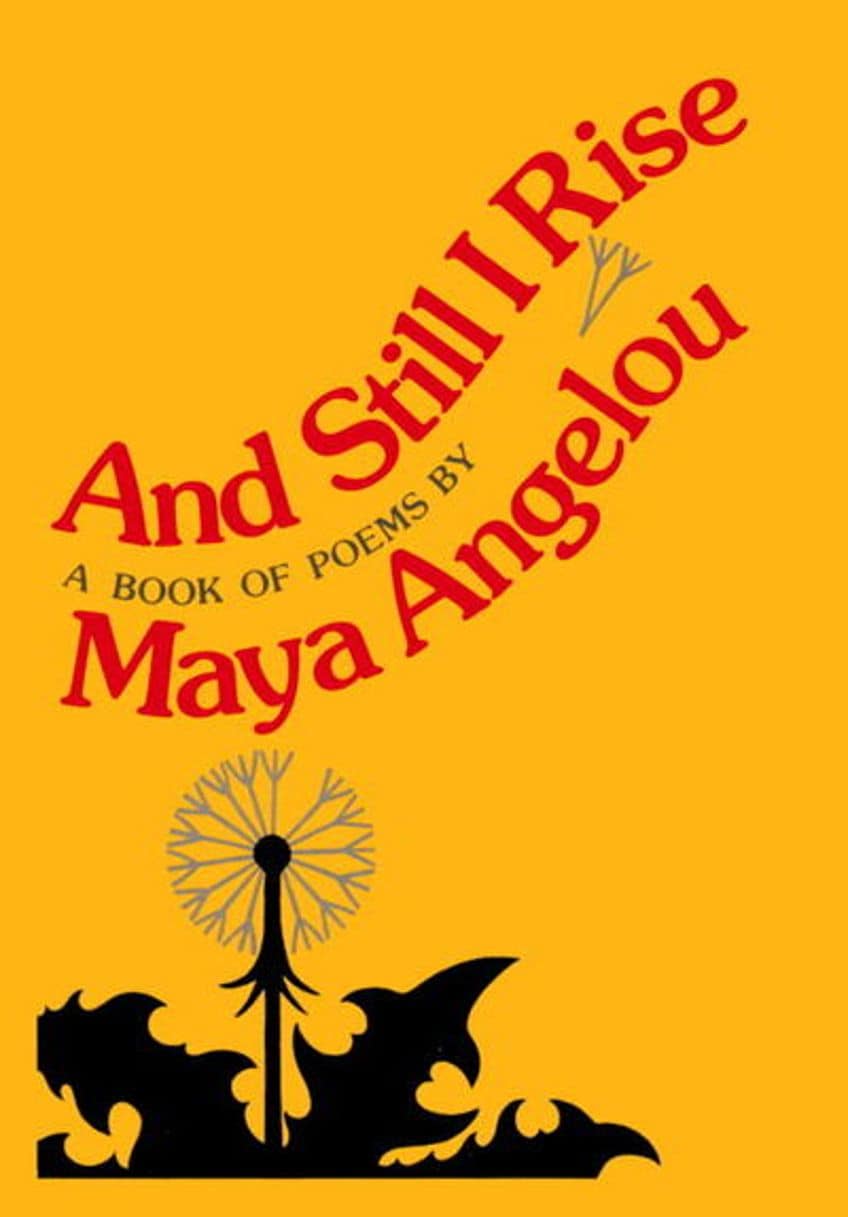
A good example of this particular mood in poetry can be found in Still I Rise by Maya Angelou. It makes use of confrontational questions to address and attack those who would wish her to remain weak and small, and one of the most notable aspects of this poem is the way in which it makes use of the repetitious phrase “I rise”. It uses this simple phrase after all those rhetorical questions and after all those dark moments. It is rage and affirmation of one’s own strength. Anger is often seen as a negative, but anger comes from a real place, and that real place can often mean that fury is the only correct and adequate response. Sometimes you simply need to shout at something.
How to Use Mood in Poetry
If you are interested in writing poetry that, in some or another way, makes use of specific (or non-specific) mood, then there are a number of ways in which you can use methods to convey mood. Let’s examine a few of those different methods that can be used to present mood in poetry:
- The use of descriptive language. If you want to show mood and emotion in the poems that you write, then you need to actually incorporate some description of the way in which you are feeling. The stronger the general tone of the kind of descriptions that you have used, the stronger the establishment of mood. This can mean describing the beauty of someone or something in detail or giving a strong description of the exact ways in which you are thinking about a particular topic.
- The use of figurative and literal language. It can be beneficial to make use of a blend of figurative or literal language. While figurative language could use metaphors or flowery descriptions, such as comparing a feeling of anger to a natural disaster or something similar, literal language can be just as powerful as it entails simply stating what you are thinking. When someone is raw and ignores supposed “poetic” language in favor of simply saying something, it can be immensely powerful.
- The use of poetic devices. There are many different poetic devices that can be incredibly useful, such as making use of repetition, rhyme, meter, and so on. These kinds of poetic devices can be used to elevate the way in which a poem flows and it can aid in the mood. For instance, a cheerful mood may entail the use of a lot of alliteration and rhyme to appear festive and jovial while an angry mood may exclude these altogether.
- The use of the setting. Where is a poem set? Sometimes a poem only discusses a particular poetic subject, such as a person who is, in some way, the fixation on which the poet has decided to spend their attention. However, a poem can also create a sense of the setting around which it takes place, and this can change the overall mood. An idyllic and natural background may be perfect for a celebratory mood but an industrial and polluted one may be best for something with a much darker mood.
- The use of tone. This term is sometimes used as a synonym for the mood of a poem, but it can also be seen as the way in which the particular attitude of the author conveys a certain message. This can mean that the speaker in a poem may reflect the way in which they are thinking or processing information. This can be used to better personalize the way in which a poem is presented.
This has been a short list of some of the ways in which you could approach the mood in poetry if you wish to try it yourself. However, a final note is that before you even start to write a poem, it can be beneficial to think of the ways in which you may want to convey certain thoughts and ideas.
What do you want the poem to be about? It is very helpful to think of these things ahead of time.
Poetry Without Mood
Can there be poetry without mood? Perhaps, in a theoretical and philosophical sense, one could try and argue that a poem could be constructed without a mood. However, in terms of ordinary usage, that essentially becomes something of an impossibility. There is no real point in even attempting to deny the use of mood in poetry as all poetry, and indeed all art of any kind is meant to instill something within those who perceive and experience it. A poem without a mood would be a poem without a feeling.
There tend to be many experiments in more postmodern avenues about creating new and adapted forms of what had once been considered the norm or necessary. This kind of experimentation is a very good thing. However, on the other hand, not everything can be denied. Even a nonsense poem that is simply made up of sounds holds a certain mood within it. That mood might be farcical or an attempt to be irreverent about what we usually hold in extreme reverence.

All art is about something. That something may be up for debate and interpretation, but if it can be interpreted, then it likely leads to some kind of a mood. Different people may not agree on what the mood of a particular text is, but that does not mean that the mood does not exist, it simply means that mood is something that can be subjectively understood and interpreted. All poetry incorporates mood, and that is one of the things that makes it such a fascinating and important literary artform.
With that final note, we come to the conclusion of our examination of the use of mood in poetry. We have looked at a variety of different types of poem moods alongside a single example of mood in poetry for each of those that were discussed. Hopefully, this has been a good look at the uses of mood in poetry and why it is such an important aspect of poetry in general.
Frequently Asked Questions
What Is Mood in Poetry?
Mood in poetry is, in basic terms, the way in which a poem creates some kind of an emotional undercurrent. This means that the mood is the thing within a poem that attempts to evoke a certain kind of emotion in the reader of said poem. This can be achieved through a number of different methods.
What Are the Different Types of Mood in Poetry?
There are many different moods that can be found in poetry. However, there is no way to categorize them all as our emotions can be incredibly subtle, but some of the most common can be dark, romantic, cheerful, mysterious, and angry moods. There are many other types of poem moods, but this is a good overview of some of the most common types that one may be able to find.
What Is the Most Common Type of Mood in Poetry?
There is no mood that is definitively more common than any other. While themes like love are often more common than any other in poetry, the topic of love can be explored in a number of different moods in poetry. This can mean that love could be explored through a romantic lens, a melancholic lens, a longing lens, and so on. What comprises the mood of a poem is something that can be entirely disconnected from the topic. We may often see love as something happy, but what if a poem is about a lover who died? The poem would still be about love, but the mood would be very different.
Can a Poem Have No Mood?
In short, a poem cannot exist without mood. A poem might not have a specific mood and could instead convey an array of different moods, but that is still an array of moods rather than a lack of moods. Every poem evokes something in a reader, and that feeling that is evoked makes up the mood of a poem.
Why Is Mood in Poetry So Important?
Mood is generally considered to be an integral aspect of poetry because it allows the poet to create an emotional connection and bond of some kind between the poem itself and the eventual reader of said poem. There could be disagreement over what kind of mood is evoked, as different readers will feel different ways, but that is part of the importance of mood in poetry. It allows a reader to feel something that a poem is trying to say.
Is Mood Only Found in Poetry?
Mood is not something that is only found in poetry. Instead, mood is considered to be an immensely important aspect of literature in general. Prose and drama also make use of mood to present the reader/viewer with some kind of feeling. We all feel something when we engage with literary works of any kind, and poetry is only one of the major genres of literature, which means that it is not unique in its use of mood.
Justin van Huyssteen is a freelance writer, novelist, and academic originally from Cape Town, South Africa. At present, he has a bachelor’s degree in English and literary theory and an honor’s degree in literary theory. He is currently working towards his master’s degree in literary theory with a focus on animal studies, critical theory, and semiotics within literature. As a novelist and freelancer, he often writes under the pen name L.C. Lupus.
Justin’s preferred literary movements include modern and postmodern literature with literary fiction and genre fiction like sci-fi, post-apocalyptic, and horror being of particular interest. His academia extends to his interest in prose and narratology. He enjoys analyzing a variety of mediums through a literary lens, such as graphic novels, film, and video games.
Justin is working for artincontext.org as an author and content writer since 2022. He is responsible for all blog posts about architecture, literature and poetry.
Learn more about Justin van Huyssteen and the Art in Context Team.
Cite this Article
Justin, van Huyssteen, “Mood in Poetry – How to Craft Atmosphere With Words.” Art in Context. September 6, 2023. URL: https://artincontext.org/mood-in-poetry/
van Huyssteen, J. (2023, 6 September). Mood in Poetry – How to Craft Atmosphere With Words. Art in Context. https://artincontext.org/mood-in-poetry/
van Huyssteen, Justin. “Mood in Poetry – How to Craft Atmosphere With Words.” Art in Context, September 6, 2023. https://artincontext.org/mood-in-poetry/.







